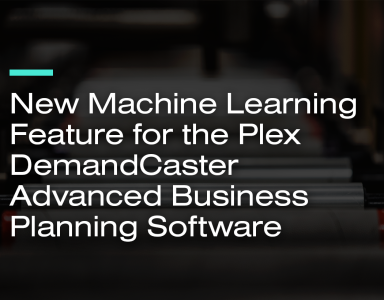The 2017 IBF Conference, which took place last week in Orlando, Florida, offered a wide array of presentations, exhibits, and offline discussions that drew a healthy audience of planning and forecasting practitioners and executives, all interested in sharing their experiences and advancing their knowledge. DemandCaster was represented at the expo and we had a chance to talk to a number of attendees and delve into their experiences, business challenges, and interests.
A general theme of the conference, and a common topic of discussion, was the interaction and relationship between people, process and technology. Within this theme, there is general agreement that processes enhance the capabilities and performance of the people, who remain the heart and soul of planning and S&OP. Technology is not going to replace the people in this equation. People provide the insight, understanding, comprehension and discernment that are critical to an effective planning process.
That said, technology is a very important part of the planning process, especially in this age of big data and IoT visibility. The dramatic increase in data and information has quickly overwhelmed our ability to understand and exploit it. With this in mind, we require more and better analytics, data visualization, and automated functions to help planners identify the truly useful information from the routine status (everything is going as planned, no intervention or changes required) and the noise. The technology discussions were mostly focused on future proofing—making sure the technology in use can keep up with the advances in visibility and the expanding complexities of modern supply chain management.
Many conference attendees were also concerned with supply chain disruption/supply chain risk, and how to improve processes for risk avoidance, mitigation, and recovery.
Throughout these discussions, it became clear that planning is an interesting combination of art and science. Science provides the platform, data, and “system” that enable the planning process. How to apply those tools in specific situations and environments is where art comes into play—and the art comes from the human side as planners develop the processes that are appropriate for their particular company, market, and challenges.
There was also considerable interest in the personality and capabilities of the planner herself or himself. Successfully functioning in this apparently technical job is actually more dependent on interpersonal and communications skills. The ideal planner candidate is more apt to be a good communicator rather than a data scientist.
There were varying opinions, however, as to overall importance of the technology as enabler versus the intelligent, effective communicator. Can the right planner be effective despite inadequate technology or can a so-so planner get by with the help of the right technology? Either way, it’s obvious that the right planner with the right technology can help drive the business forward with consistent, repeatable processes using statistics and metrics to enhance communications between the top executives, planners, production, procurement, and logistics throughout the supply chain.


